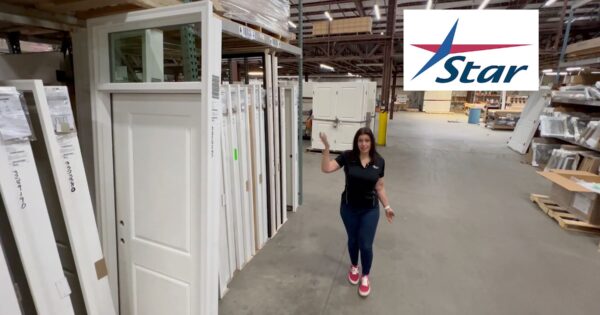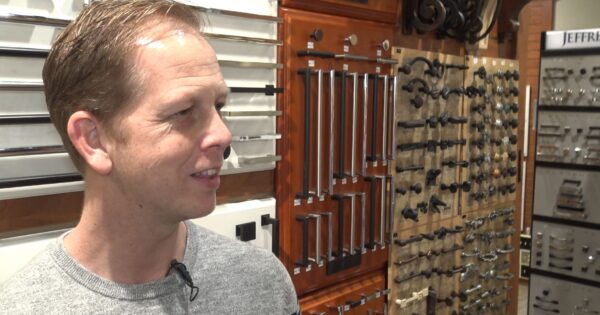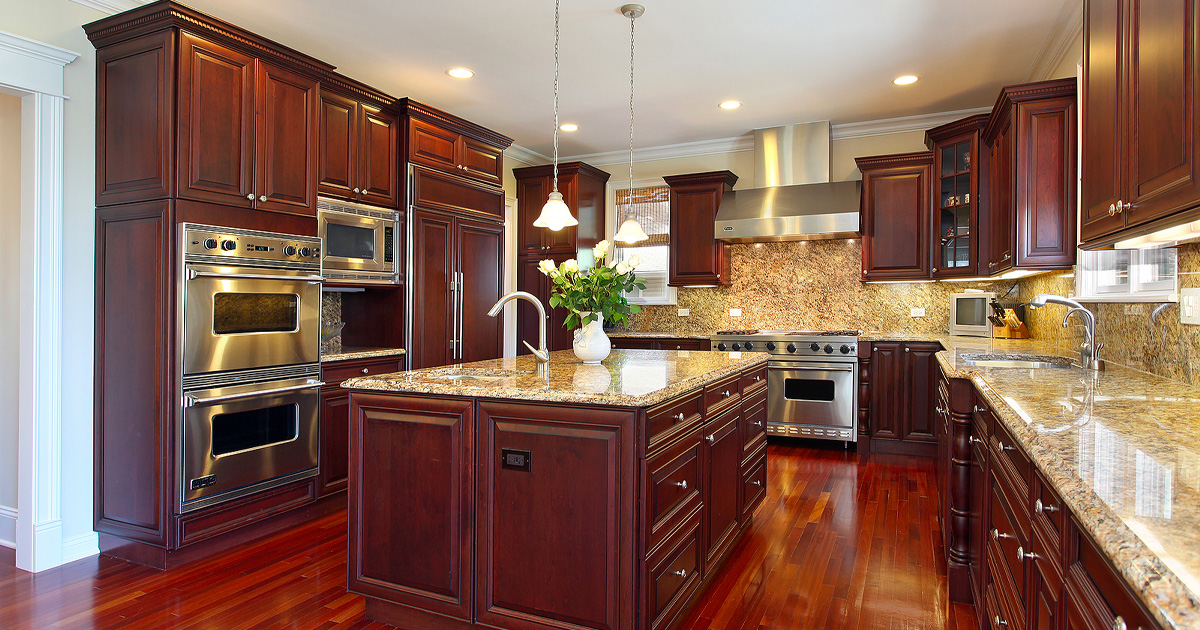
What Every Wichita Homeowner Needs to Know
In our kitchen cabinet buying guide we outline the need for durable materials and how they add depth to your home. Long-lasting materials dictate your cabinet’s lifespan, whether or not you’ll need to make frequent repairs and can add value to your home. As a result, we’ve put together this guide to help Wichita homeowners pick the best cabinet material for their ideal kitchen.
Popular Kitchen Cabinet Materials
Solid Wood Cabinets
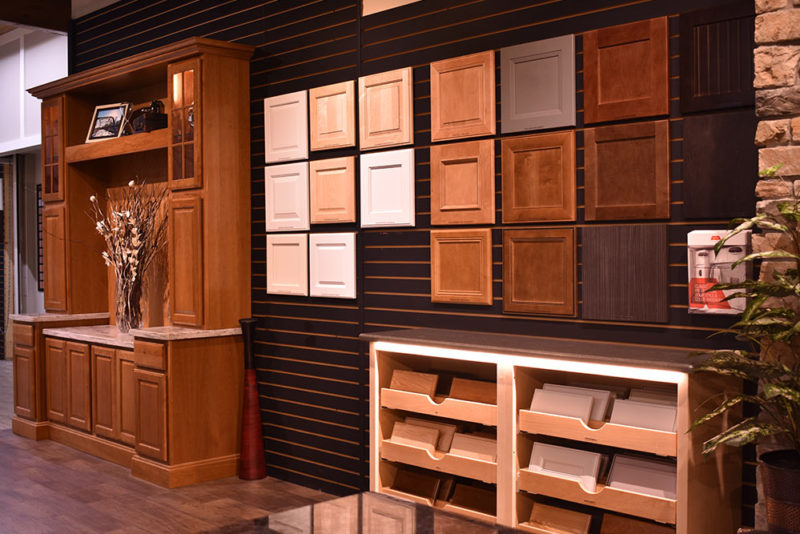
As the most expensive and one of the most durable cabinet materials on the list, solid wood cabinets like maple, oak and cherry are popular for their price, general availability and classic, timeless look. Homeowners may also consider uncommon options such as: walnut, eco-friendly bamboo and reclaimed wood. In addition, wood cabinets can be stained or painted to match your home’s style and offer protection from general wear and tear.
Solid wood cabinet prices vary widely depending on the wood type, customization and finish. While hardwoods like cherry and walnut are pricier, pine offers a budget-friendly option. Wood is also a renewable and biodegradable resource, making it a sustainable cabinet material when sourced ethically.
Solid Wood Cabinets Pros and Cons
Pros
- High durability
- Can increase home resale value
Cons
- High cost
- Requires extensive maintenance
Wood Veneer Cabinets
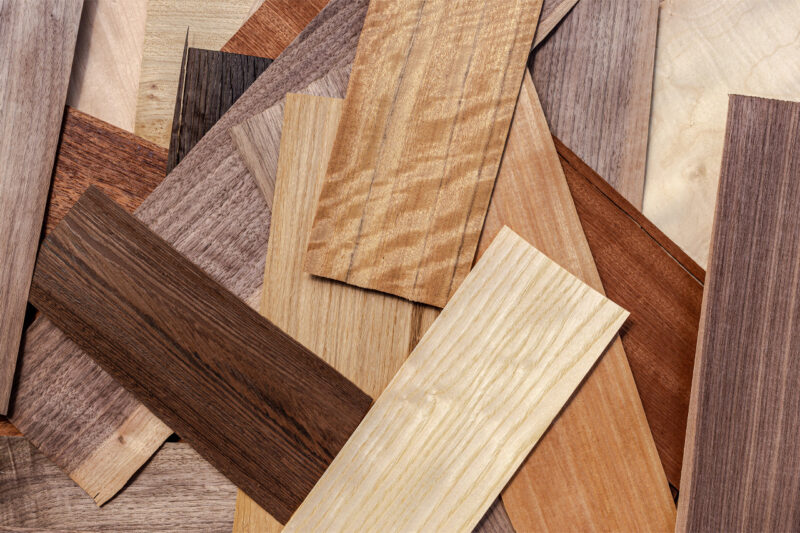
Wood veneer cabinets offer the aesthetic of solid wood without the price. These cabinets cost less than solid wood and are made by adhering a thin wood layer to a core material, typically made of medium-density fiberboard (MDF). Overall, wood veneer cabinets are more affordable than wood cabinets because of the construction, but this also means that they are less durable. There are two major types of wood veneer, paper-backed which is budget-friendly and less durable, and phenolic-backed which is expensive but more moisture resistant.
When it comes to wood veneer, homeowners assume that wood veneer chips or peels easily. In fact, this is often not the case. When properly installed wood veneer cabinets can last up to 20 years or more. Options like phenolic-backed veneer help add to the overall lifespan, by creating a moisture tight seal preventing damage.
Wood Veneer Cabinets Pros and Cons
Pros
- Wide variety of affordable styles
- Less prone to warping or cracking than solid wood
Cons
- Susceptible to water damage
- Fewer refinishing options
Medium-Density Fiberboard (MDF) Cabinets
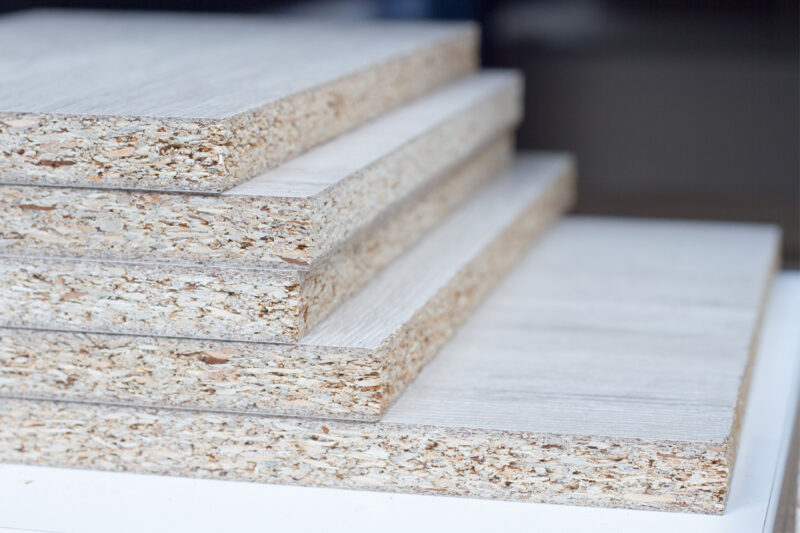
Medium density fiberboard (MDF) is a wood product created from broken down soft or hardwood fibers that are bonded together with resin using heat and pressure. MDF is a budget-friendly alternative with low maintenance and slightly higher durability than particleboard. To enhance appearance and durability, MDF cabinets are typically finished with primers and paint, lacquer, polyurethane, varnish, or oil-based finishes. Additionally, there are different grades of MDF with varying protection:
- High-density fiberboard (HDF) is the most durable and costly type of MDF. It’s often used in cabinets and furniture.
- Moisture-resistant MDF is coated with wax for added moisture protection.
- Fire-rated MDF is designed for high-heat areas.
While MDF is a budget-friendly and versatile option, it’s important to be aware that it can contain formaldehyde, a chemical that may raise indoor air quality concerns. To minimize risks, choose low or no formaldehyde MDF products and properly ventilate your kitchen.
MDF Cabinets Pros and Cons
Pros
- Stronger moisture resistance than other materials
- Range of affordable finishes like laminate
Cons
- Prone to dents, scratches and chipping
- Heavy and dense making installation difficult
Thermofoil Cabinets
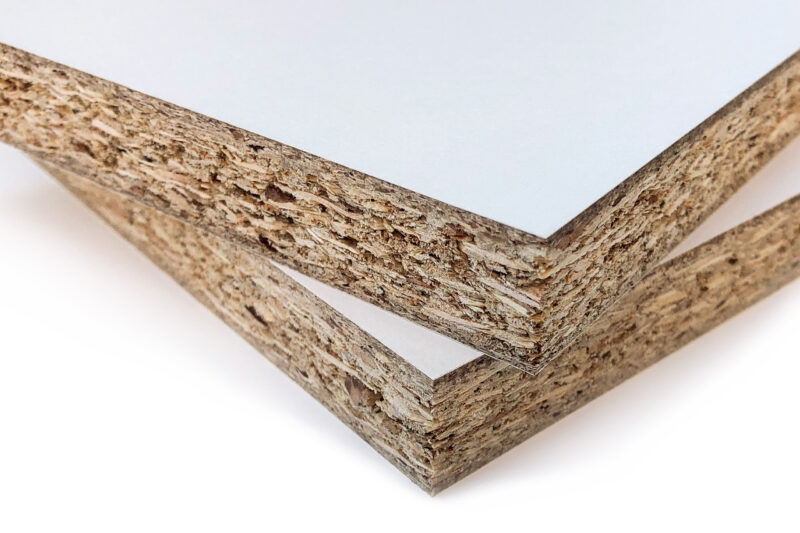
More affordable than MDF, thermofoil cabinets come in a wide range of colors. Thermofoil cabinets are made by heat and pressure sealing a thin vinyl film to a base made of MDF. The simple process allows for increased customization other options don’t offer. Homeowners can heat press patterns or decals and add unique textures to their cabinets without breaking the bank. However, as one of the weaker options available, many owners may see the vinyl layer start to crack, chip or peel overtime.
Thermofoil Pros and Cons
Pros
- More affordable than other options
- Easy cabinet construction
Cons
- Lower durability compared to other options
- Difficult to repair
Metal Cabinets
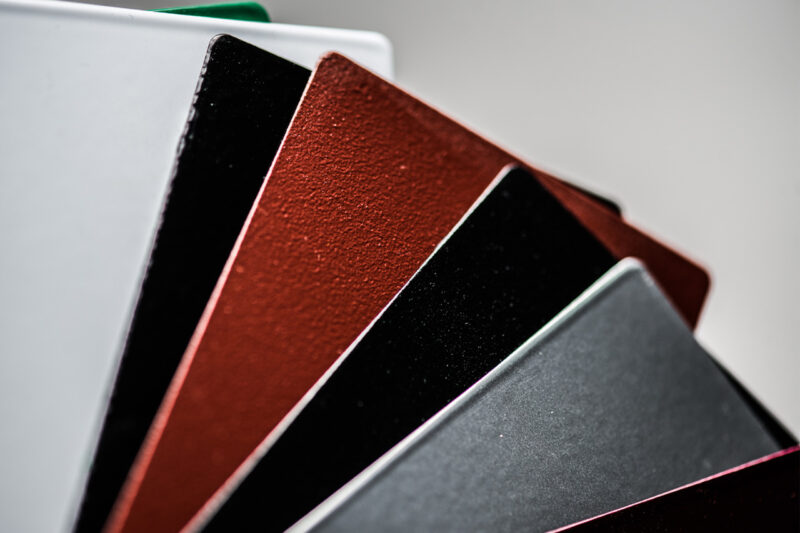
Sleek, modern and more expensive than other popular cabinet materials, metal cabinets have limited style choice but increased durability. Steel cabinets are known for their iconic look and can come in several different grades: A36, A1011 and Galvanized. Each of these grades provides varying levels of corrosion and rust resistance. On the other hand, powder-coated aluminum cabinets provide corrosion resistance, seamless uniform finishes and additional colors that steel can’t match.
Metal Cabinets Pros and Cons
Pros
- Moisture, heat and impact resistant
- Easy cleaning, hygiene and maintenance
Cons
- Expensive materials and installation
- Limited styles and designs
Laminate Cabinets
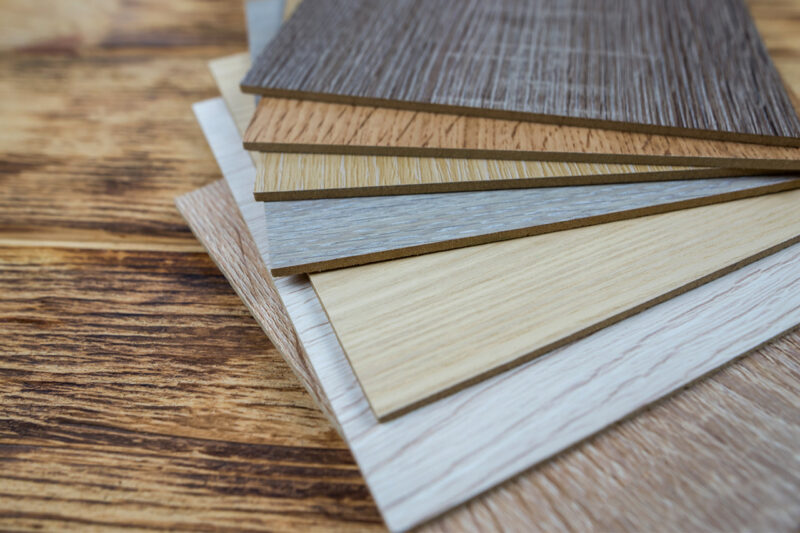
Laminate cabinets provide a durable, affordable option for any budget. These cabinets are created by high-pressure sealing laminate material to MDF. High-pressure laminate (HPL) cabinets are more durable than thermofoil options because of the intense pressure sealing process that prevents moisture and peeling damage. Like thermofoil, HPL cabinets come in different patterns, and unique textures, such as wood grain or uniform concrete. These styles allow laminate cabinets to mimic real wood textures without the hefty price tag.
Laminate Cabinets Pros and Cons
Pros
- High resistant to scratches, stains and fading
- Low maintenance, minimal upkeep
Cons
- Can be difficult to repair
- Susceptible to moisture damage
Emerging Cabinet Materials
Beyond the traditional cabinet materials, acrylic, concrete and recycled materials are gaining popularity. Sustainable cabinet materials like reclaimed wood or plastic are appealing to eco friendly consumers with an eye for rustic styles. Acrylic cabinets have a high-gloss finish with vibrant colors that benefit from enhanced durability and moisture resistance. For a bold, modern, open cabinet aesthetic, concrete provides unmatched durability and heat resistance.
Additional Consideration for Cabinet Materials
When choosing materials for your kitchen cabinets, consider more than the price and longevity. Plywood shelves are often a great choice over particleboard because of their strength and durability. Quality hardware, hinges, drawer slides and handles add to your aesthetic but also provide smooth closing which is crucial for long-term function. Consider choosing eco-friendly suppliers dedicated to sustainability, too. Lastly, your lifestyle and usage patterns play a large role in the decision. You may prioritize more work space if you like to cook, or focus on durable materials if you have children and pets.
Get Expert Advice for Your New Cabinets
With over 80 years of experience serving Wichita homeowners, Star Lumber is your trusted source for quality cabinets. Our expert design team is available for personalized guidance to help you choose the right cabinet materials for your kitchen remodel or new home. Schedule a free design consultation today.

